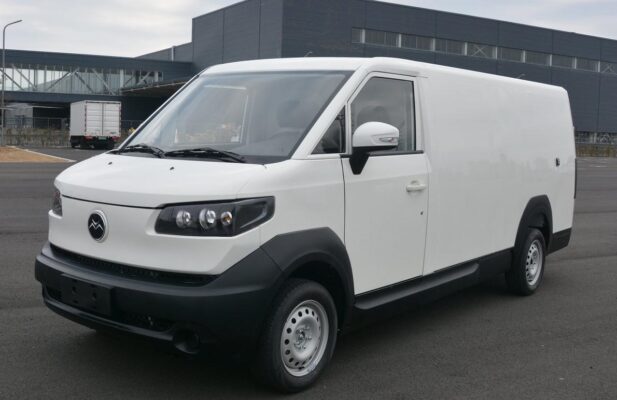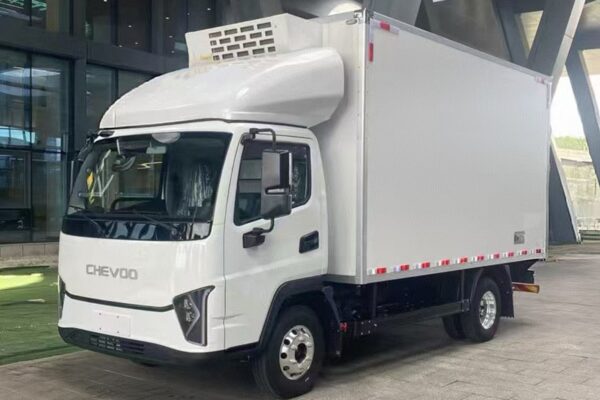Electric rori zivo
Kungwarira kana uchityaira mumwaka wekunaya: Wading Strategies yemotokari nyowani dzekutengesa dzekutengesa
Mumwedzi wapfuura kana zvakadaro, Matunhu ekumaodzanyemba akaenderera mberi akarohwa nemvura inonaya, uye mvura yemvura munzvimbo zhinji dzakazorodza zvinyorwa zvekare. Kana uchityaira panguva yekunaya kwemvura, mota dzinowanzofanira kunge dzichiraira nemvura. Shure kwezvose, mota haina kugadzirwa kuti ishandise yekushandisa, uye kunyange iyo yakadzika marara haifanirwe kutorwa zvishoma kuti udzivise matambudziko asina basa.
Nhasi, Isu takagadzirira gwara rakazara munzira chaiyo yekutyaira panguva yekunaya kwemvura. Nekudzidza mamwe madiki hunyanzvi, Iwe unogona kuwana kutyaira zvakanyanya nyore uye kwakachengeteka.
I. Njodzi dzekumacha dzeMotokari dzeSimba dzekutengesa mumwaka wekunaya mumwaka wekunaya
A. Bhatiri – Njodzi dzakabatana
Bhatiri ndiyo moyo we mota yemagetsi, uye kukosha kwayo hakugone kuve kwakanyudzwa. Mumvura inonaya, Mhepo yakanyorovesa ine yakakwirira yezvinhu zvemukati. Kunyangwe bhatiri rakashongedzwa nemunyoro – Chirongwa chidziviriro kunze, pane nguva dzose njodzi diki yemvura ingress. Kana mota yapinda kuburikidza nemvura, Kunyangwe chidiki diki chemvura kupinda mubhatiri kunogona kutungamira kumhedzisiro yakakomba. Mvura – Mabhatiri akakuvara anogona kusangana mapfupi – matunhu, iyo isingakwanise kungoita kurasikirwa kamwe kamwe kwesimba panguva yekutyaira asi zvakare iyo yakakosha kuchengetedzeka njodzi, zvinogona kutungamira kumoto kana kuputika mune zvakanyanyisa zviitiko.
B. Chassis – Njodzi dzakabatana
Iyo chassis ndiyo chikamu chepedyo kwazvo pasi uye chakakanganiswa zvakanyanya nemamiriro emigwagwa. Mumwaka wekunaya, Kuratidzwa Kwekugara kwemvura nematope kunoita kuti ive yakanyanya kutambudzika kusvika pakubata. Maitiro ekurova anogona kusuka iyo yekutanga yekudzivirira machira pane chassis, uye kuvapo kwemvura, yakasanganiswa nemaronda uye zvimwe zvinhu mumugwagwa runoff, inosimudzira maitiro ecorosion. Kuwedzera, Iko kukanganisika kwekuputika pane chassis kunogona kukonzeresa zvikamu senge vhiri hub kusunungura kana kutovhara pane nguva, izvo zvinogona kutungamira kune zvisina kujairika vibrations panguva yekutyaira uye kukanganisa kugadzikana kwakazara uye kuchengeteka kwemotokari.
C. Musoro – Njodzi dzakabatana
Kunaya kwemvura kunoita kuti zvive nyore kuti mvura ipinde mumisoro. Kamwe mvura ichipinda mumisoro yemusoro, Izvo hazvingori kungodzora kupenya kwemwenje asiwo kunochinja nzira yekuvhenekerwa kwerradiation. Izvi zvinogona kukanganisa zvakanyanya kuoneka kwemutyairi, kunyanya usiku kana kuderera – Mamiriro Eedza. Isina kukwana mwenje inogona kuita kuti zviome kuti mutyairi azive mamiriro emigwagwa, Vanofamba netsoka, uye dzimwe mota, Kuwedzera njodzi yenjodzi dzemumigwagwa.
D. Pendi – Njodzi dzakabatana
Iyo acidic zvikamu mumvura yemvura ine simba rakasimba pane iyo yemotokari pendi. Kufumurwa kwenguva refu kune mvura yemvura panguva yemwaka wekunaya kunogona kukuvadza zvishoma nezvishoma pendi, inotungamira kuFADING, Peeling, uye ngura. Pendi yakakuvadzwa isingakanganisi chete kuoneka kwemotokari asi zvakare inofumura simbi kune izvo zvinhu, Kuwedzera kukurudzira maitiro ecorosion yemuviri wemotokari.
II. Wading Strategies yemotokari nyowani dzekutengesa dzekutengesa
A. Kuchengeta kwebhatiri
- Pre – Wading Kuongorora
Usati watyaira kuburikidza nemvura – nzvimbo yakazara, Izvo zvakakosha kuti uitise kuongororwa kwekutanga kwebhatiri. Tarisa iyo bhatiri yakavharirwa chero chero zviratidzo zvinooneka zvekukuvara kana marara. Ita shuwa kuti zvese zvisimbiso zvakakomberedza bhatiri zvakaringana. Kana paine kusava nechokwadi nezvekuvimbika kwekudzivirira kwebhatiri, Zvinokurudzirwa kuti udzivise kupunzika kuburikidza nemvura yakadzika.
- Post – Wading Kuongorora
Mushure mekupaza, pakarepo tarisa bhatiri yemvura ingress. Vhura iyo bhatiri compartment yekuvhara nokungwarira. Tarisa chero zviratidzo zvekuunganidzwa kwemvura mukati mekamuri. Kana paine mvura, Usatange mota yacho nekukurumidza. Pachinzvimbo, Bata vashandi vehunyanzvi ekugadzirisa. Ivo vachashandisa midziyo yakasarudzika yekuyedza iyo bhatiri voltage, kuramba, uye zvimwe paramita kuti uone kana bhatiri rave rakakuvadzwa. Kana bhatiri racho riripo chete hushoma hwemvura ingress, Izvo zvingave zvichikwanisika kuomesa zvakakwana uye kuitisa zvimwe bvunzo. Zvisinei, Kana bhatiri rave rakakanganiswa nemvura, Izvo zvingangoda kutsiviwa kuti uve nechokwadi chekushanda kwakachengeteka kwemotokari.
- Kugara kuchengetedzwa
Kuwedzera kune ongororo isati yatanga uye mushure mekupaza, Kugara kuchengetedzwa kwebhatiri zvakare kwakakosha. Tarisa bhatiri rekubhadhara uye kuridza kugona kwebasa nguva dzose. Kuderera kwekubudirira kunogona kuratidza matambudziko angangoita nebhatiri. Geza iyo bhatiri mainthall nguva dzose kudzivirira kuora, Semaminitsi akanyorwa anogona kukanganisa maitiro emagetsi uye kutungamira kune simba – Supping Nyaya.
B. Chassis hanya
- Kuchenesa
Mushure mekupaza, Nhanho yekutanga ndeye kuchenesa iyo chassis zvakakwana. Shandisa zvakakwirira – kumanikidza mvura jets kubvisa zvese matope, jecha, uye madhishi akanamatira kune chassis. Teerera zvakanyanya kune nzvimbo dzakatenderedza vhiri hub, kumiswa kwezvikamu, uye pasi pemunhu. Ita shuwa kuti hapana tsvina yasara kumashure, Sezvo izvi zvinogona kutambisa kunyorova uye kukurumidza kuora.
- Ngura – kurapwa kurapwa
Kamwe chassis yakachena uye yakaoma, Inguva yekushandisa ngura – kurapwa kurapwa. Kune akasiyana siyana ngura – Zvipoti zvemubatanidzwa zvinowanikwa pamusika. Nyanzvi yehunyanzvi – chiratidzo kurapwa kunogona kuumba denderedzwa rekudzivirira pane chassis pamusoro, kudzivirira kupinza kwemvura uye oksijeni, Ndezvipi zvakakosha zvinokonzeresa ngura. Ngura – humbowo madzishe unogona kazhinji kugara kwenguva 3 mwedzi, Asi zvinogona kusiyana zvichienderana nemhando yekubatanidza uye nzvimbo yekutyaira. Gara uchiongorora mamiriro egutu – Proof layer. Kana paine chero zviratidzo zvekutarisa kana kukuvara, re – shandisa iyo yekubatira nenzira yakakodzera.
- Chikamu Kuongorora
Ongorora zvese zvakavanzika zveCHASS, seyamutemo rekumiswa, Zvikamu Zvekuita, uye mabhureki mabhureki. Tarisa uone chero zviratidzo zvekusununguka, deformation, kana kukuvara. Simbisa chero bhodhi dzakasununguka uye nzungu. Kana paine chero zvikamu zvakakanganisika, vhura ivo pakarepo. Semuyenzaniso, Spring yakakuvadzwa yekumiswa inogona kukanganisa mari yekubata mota uye kutasva nyaradzo, uye mutsara wekubiridzira unogona kutungamira kumatambudziko akakura ekubvutwa.
C. Chengetedza musoro
- Kuongororwa kwemvura ingress
Mushure mekutyaira mumvura, Tarisa magetsi emvura yemvura ingress. Kana paine mvura mukati memisoro yemwenje, Izvo zvinowanzoonekwa sehomwe kana madonhwe emvura pane iyo yemukati yeiyo lens. Kana iwe ukaona mamiriro akadaro, usazvirega.
- Kubvisa Mvura Vapor
Kana iyo mvura ichingori isina kuoma uye chete inoonekwa semapendi emvura, iwe unogona kuedza kuibvisa nekutendeuka pane ese magetsi uye zvakakwirira – matanda panguva imwe chete. Rega vasiye kweinenge awa. Munguva ino, Kupisa kunogadzirwa nemabheji kunogona kubatsira kubuda kwemvura yemvura. Mushure meawa, dzima magetsi uye tarisa kana mupfuti wemvura wanyangarika. Kana zvave, Izvo zvinogona kuti iyo mango yemvura yaive nekuda kwechisimbiso chakasununguka pane bulb socket. Mune ino kesi, Iwe unogona kusimbisa iyo socket kana kutsiva chisimbiso kudzivirira ramangwana rinoita.
- Kugadziridza Inorema Mvura Ingress
Kana iyo mvura yemvura isinganyangarika mushure meawa, Inogona kuratidza dambudziko rakakura, sedutu rembiru pakukosanyemba kwemusoro wenyaya dzimba. Mune ino kesi, iwe unofanirwa kuchenesa chinonamatira zvakazara. Shandisa iyo yakakodzera yekuchenesa mumiririri kubvisa chero tsvina, mafuta, kana old adesive. Mushure mekuchenesa, Rega nzvimbo yacho iome zvakakwana. Ipapo, Nyorera yakakwira – mhando yemotokari yemotokari selant kune yakabatanidzwa. Ita shuwa kuti ushandise chibvumirano cheSaneltly uye zvakanaka. Kana iwe usiri chivimbo muhunyanzvi hwako hwekugadzirisa, Zvakanaka kutora mota kune nyanzvi yekugadzirisa yekugadziriswa kwekugadziriswa kwakakodzera.
D. Pendi yekutarisira
- Kugeza
Mushure mekutyaira mumvura, kunyanya mushure mekupaza kuburikidza nemvura, Geza mota nekukurumidza sezvinobvira. Shandisa mota nyoro geza desgent uye chipanje chakapfava kana jira kuti uchenese muviri wemotokari. Teerera kune yakadzika chikamu chemotokari, uko matope uye mvura inounganidza. Kunyatsochenesa mapundu uye kudzokorora kudzivirira kuunganidzwa kwetsvina uye kunyorova.
- Waxing
Waxing ndiyo nzira yakapusa uye inoshanda yekuchengetedza pendi yemotokari. Wax inogona kuumba firimu rekudzivirira pane iyo pendi pamusoro, iyo inogona kuramba iyo corrosion yemvura uye zvimwe zvinosvibisa. Sarudza yakakwira – mhando yemotokari yax yakakodzera pendi yemotokari yako. Nyorera iyo wax zvakanyanyisa pane iyo pendi pamusoro, Kutevera mirairo pane iyo wax chigadzirwa. Waxing inofanira kuitwa nguva dzose, kazhinji yega yega 1 – 2 mwedzi, Zvichienderana nenzvimbo yekutyaira uye frequency yekushandisa.
- Kupenya
Kwenguva yakareba – kusingaperi uye inoshanda pendi kuchengetedza, funga kupenya. Kupenya kunosanganisira kushandisa yakakosha yekudzivirira yekubatanidza kune iyo pendi pamusoro. Uku kuunganidza kunoumba kuomarara uye kusimba dura kunogona kupa kudzivirirwa kuri nani kubva mukucheka, UV Rays, uye zvinokonzeresa zvinokonzeresa mvura yemvura. Maitiro ekupenya akaomesesa pane kuomeswa uye kazhinji kunoda midziyo yehunyanzvi uye hunyanzvi. Zvisinei, Iyo yekudzivirira mhedzisiro inogona kugara kwemakore akati wandei, Kugadzira iyo mutengo – Sarudzo inoshanda mukufamba kwenguva.
Mumhedziso, Kutyaira matsva esimba ekutengesa mota mumwaka wekunaya kunoda imwe yekungwarira. Nekutevera idzi dzinotarisira dzekutarisira mazano ebhatiri, chassis, Misoro, uye pendi, Iwe unogona kubatsira zvinobudirira mota yako, Ita shuwa kuti ishandiswe yayo yakachengeteka, uye wedzera hupenyu hwayo hwebasa. Rangarira, Kudzivirira kunogara kuri nani pane kurapa, uye kutora hanya zvakanaka mota yako panguva yekunaya kwemvura kunogona kukuponesa iwe dambudziko rakawanda uye mitengo munguva refu.



